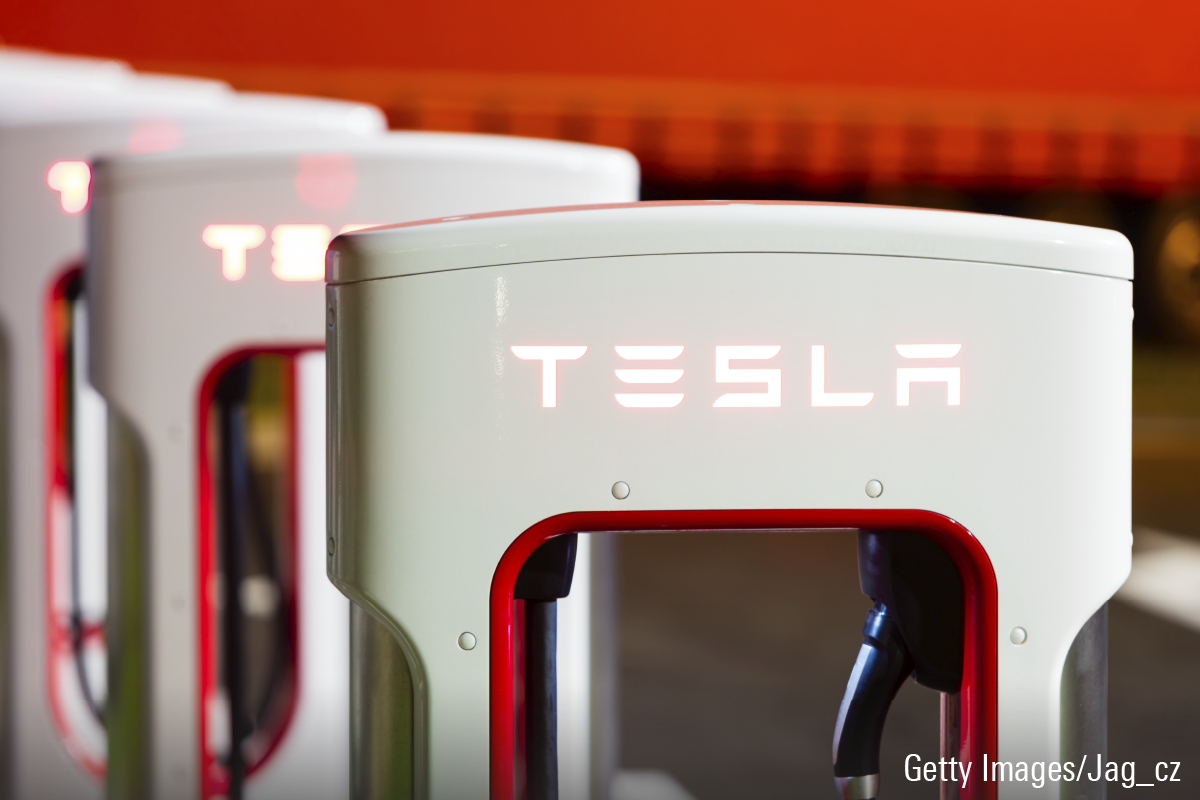Is Tesla Stock a Buy or Sell Right Now?
We recently changed our fair value estimate—here’s what we think the stock is worth.

Tesla is one of the largest battery electric vehicle makers in the world. In less than a decade, the company went from a startup to a globally recognized luxury automaker with its Model S and Model X vehicles. It competes in the entry-level luxury midsize car and crossover SUV markets with its Model 3 and Model Y vehicles. Tesla also plans to sell new vehicles over the next several years, including a light truck, a semi truck, a sports car, and an affordable sedan and SUV. Tesla aims to maintain its market leader status as EVs grow from a niche market to mass consumer adoption. To meet growing demand, Tesla opened two new factories in 2022, which increased its production capacity. Tesla invests around 4% of its sales in research and development, focusing on improving its market-leading technology and reducing its manufacturing costs.
Key Morningstar Metrics for Tesla
- Fair Value Estimate: $225
- Star Rating: 4 Stars
- Economic Moat Rating: Narrow
- Moat Trend Rating: Stable
Economic Moat Rating
Tesla’s narrow economic moat is based on its intangible assets and cost advantage. The company’s strong brand cachet as a luxury automaker commands premium pricing, while its EV manufacturing expertise allows the company to make its vehicles cheaper than its competitors. Tesla’s brand cachet is not likely to be impaired anytime soon, because we expect the company to keep innovating to stay ahead of startup and established competitors. Tesla’s proprietary technology contributes to its intangible asset-driven competitive advantage. We think Tesla benefits from a cost advantage in EV production thanks to its manufacturing scale. Legacy automakers are gradually transitioning to BEV production from internal combustion engines, but we expect they will be saddled with legacy ICE costs for a long time.
Read more about Tesla’s moat rating.
Fair Value Estimate for Tesla Stock
Our fair value estimate is $225 per share. We use a weighted average cost of capital of just under 9%. Our equity valuation adds back nonrecourse and nondilutive convertible debt. Our valuation assumes Tesla increases its annual total vehicle delivery volume to a little over 1.8 million in 2023 and over 5 million by 2030. This includes fleet sales, an expanding opportunity for Tesla. Our forecast is well below management’s aspirational goal of selling 20 million vehicles by the end of this decade, but it is nearly 4 times the 1.31 million vehicles delivered in 2022. We think Tesla will be successful in continuing to reduce its manufacturing costs on a per vehicle basis. We forecast segment gross margins will expand to roughly 33% from the 29% achieved in 2022, generating automotive profit growth in excess of revenue growth. We forecast companywide operating margins will surpass 20% in the second half of the decade, up from 17% in 2022.
Read more about Tesla’s fair value estimate.
Risk and Uncertainty
We see a wide range of potential outcomes for Tesla. Electric vehicles could remain a niche segment if mass-market consumers don’t adopt the new powertrain technology due to higher costs and worse function. EVs could also be disrupted by other powertrain technologies. The automotive market is highly cyclical and subject to sharp demand declines based on economic conditions. As EV competition grows from traditional automakers and new entrants, consumers may have more choices and view Tesla less favorably. The company is investing heavily in capacity expansions that carry the risk of delays and cost overruns. It is also investing in R&D in an attempt to maintain its technological advantage with no guarantee these investments will bear fruit. Tesla CEO Elon Musk owns a little over 20% of the company’s stock and uses it as collateral for personal loans, which raises the risk of a large sale to repay debt.
Read more about Tesla’s risk and uncertainty.
Tesla Bulls Say
- Tesla has the potential to disrupt the automotive and power generation industries with its technology for EVs, autonomous vehicles, batteries, and solar generation systems.
- Tesla could see higher profit margins as it reduces unit production costs over the next several years.
- Through the combination of its industry-leading technology and unique supercharger network, Tesla offers the best function of any EV on the market.
Tesla Bears Say
- Traditional automakers are investing heavily in EV development, which could result in Tesla losing market share and seeing a deceleration in sales growth due to increased competition.
- EV adoption is driven largely by government initiatives, such as regulations and subsidies, which will limit long-term market growth for Tesla.
- Solar panel and battery prices may decline faster than Tesla can reduce costs, resulting in little to no profits for the energy generation and storage business.
Remove the guesswork and make informed decisions faster. Morningstar Investor’s stock ratings, analysis, and insights are all backed by our transparent, meticulous methodology. Learn more and start a seven-day free trial today.
The author or authors do not own shares in any securities mentioned in this article. Find out about Morningstar’s editorial policies.

/s3.amazonaws.com/arc-authors/morningstar/ca8d2ce1-cd0f-433b-a52b-d163be882398.jpg)
/cloudfront-us-east-1.images.arcpublishing.com/morningstar/IORW4DN3VVC3BC4JO7AQLSJTF4.jpg)
/cloudfront-us-east-1.images.arcpublishing.com/morningstar/ODMSEUCKZ5AU7M6BKB5BUC6G5M.png)
/cloudfront-us-east-1.images.arcpublishing.com/morningstar/TGMJAWO4WRCEBNXQC6RFO5TOAY.png)
:quality(80)/s3.amazonaws.com/arc-authors/morningstar/ca8d2ce1-cd0f-433b-a52b-d163be882398.jpg)